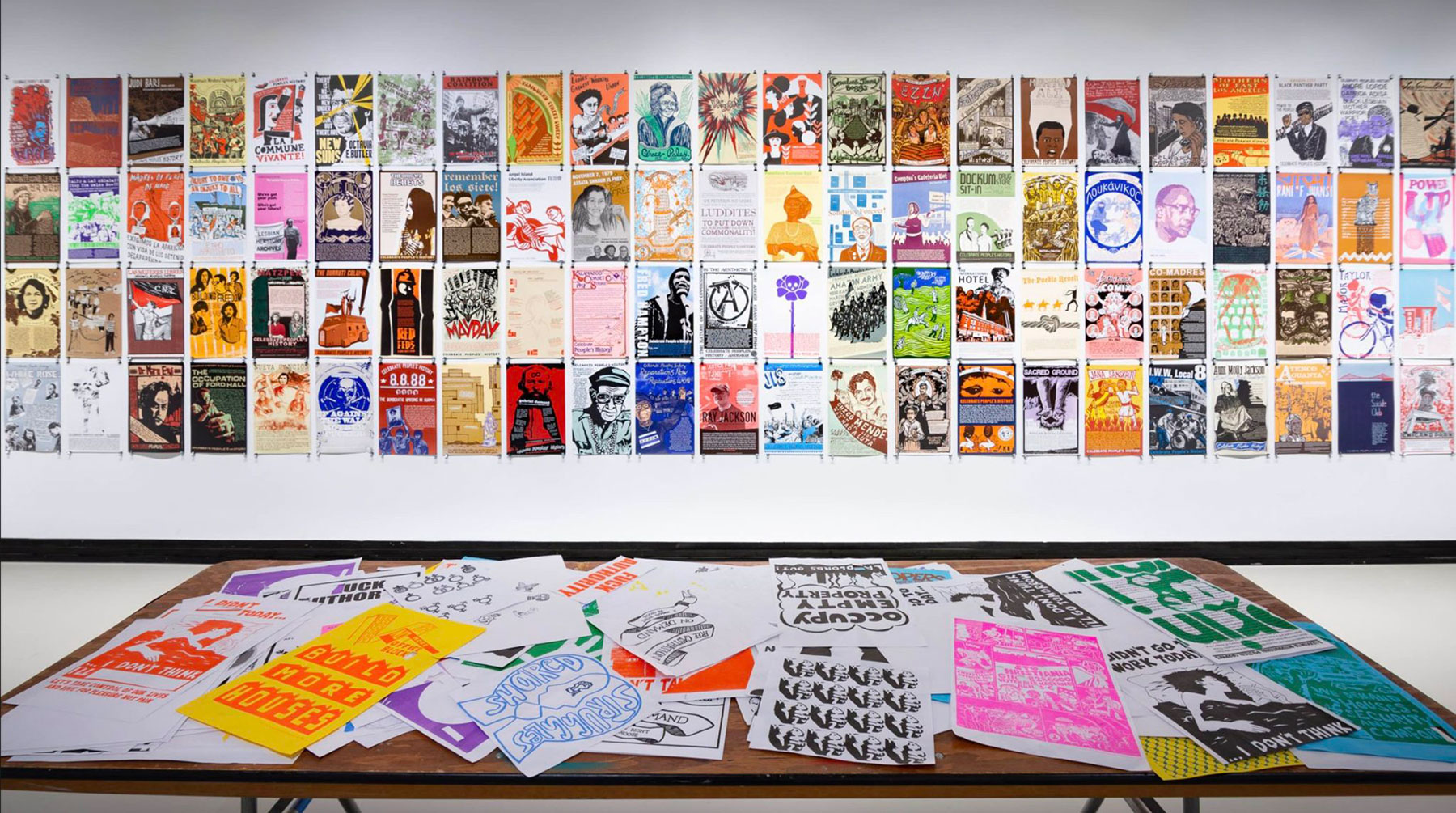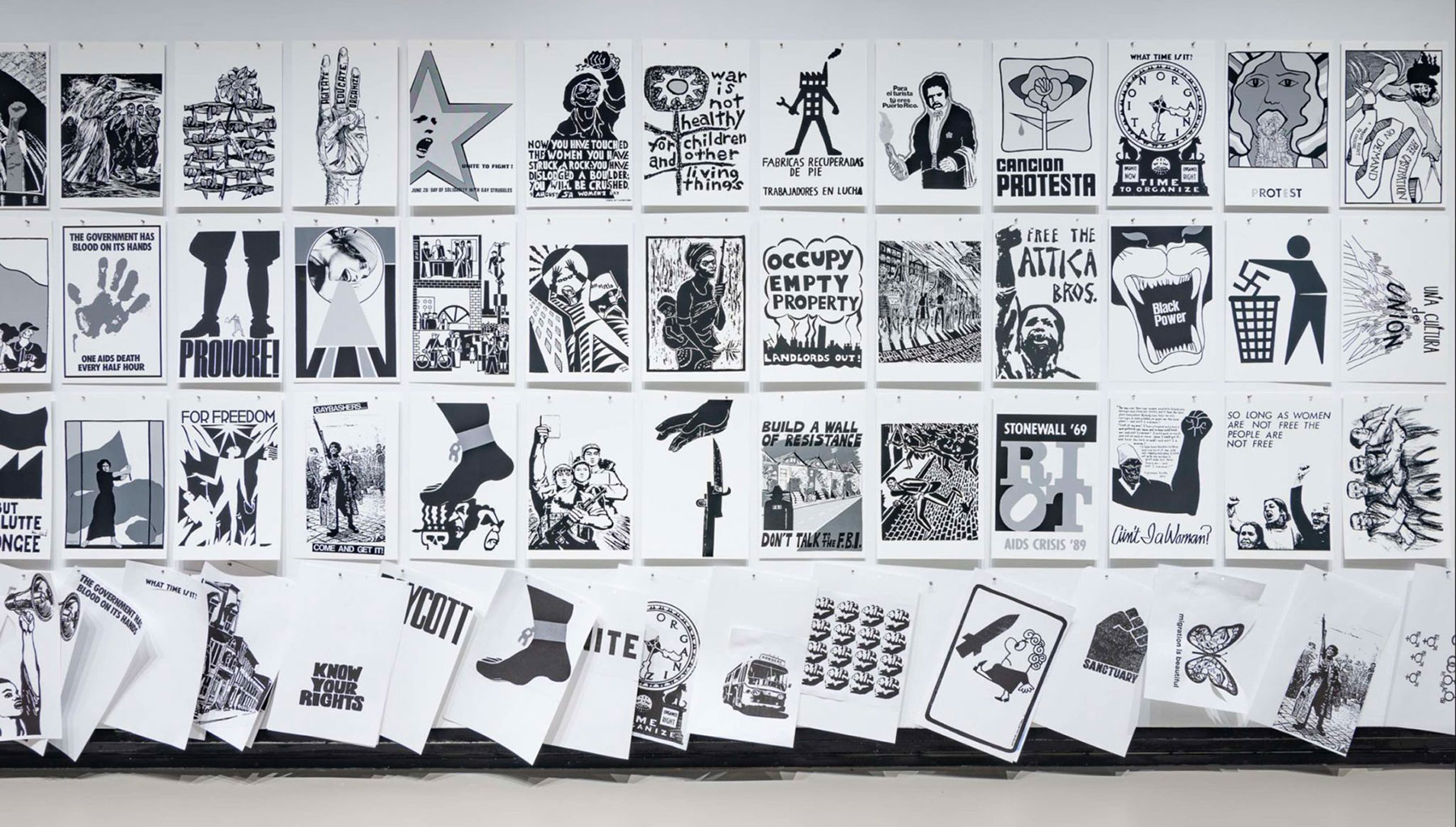On view from January 24- March 4th in the Gillespie Gallery of Art is Graphic Liberation.

Graphic Liberation is an exhibition and poster-making workshop which highlights the role of graphic design in international social change movements, including civil and gender rights, labor, AIDS, punk, hip-hop, and other movements.
The exhibition and workshop are organized and developed by Josh MacPhee, internationally renowned designer, design historian, and founder of Justseeds Artists’ Cooperative, Interference Archive, and the journal, Signal. The exhibition originated at Colgate University and will travel to the Cleveland Institute of Art following its run at Mason.
The goal of the exhibition and workshop is to destabilize popular myths in the history of design that valorize individual authorship and novelty at the expense of contributions made by social movements that are grounded in collaboration and collective action.
It counters the dominant narrative by demonstrating how graphic ideas circulate across grassroots movements and evolve through a horizontal network of exchange that often involves copying, iterating, and evolving common symbols and imagery for use in international contexts and struggles.
In addition to featuring hundreds of prints, posters, record album covers, and books, the exhibit space will be outfitted as a print workshop inviting students and the public to participate directly in the design and production of posters and other graphic elements. In designing this exhibit and workshop, MacPhee has created methods for participants to create their own posters and graphic ephemera while engaging with the historical content through a variety of equipment, tools, and supplies including printed panels that are meant to be handled and copied by participants on a risograph machine; and rubber stamps that can be used to reproduce various iconography used throughout activist poster history.
The content represented in the Graphic Liberation exhibition is intentionally developed as an anti-racist history of politically-oriented graphic design. The exhibit highlights contributions from a diverse set of communities, identities, and orientations including African American civil rights activists, Cuban revolutionaries, AIDS activists, women’s rights advocates, and South African trade union members among many others. The workshop component of the exhibit is explicitly designed to bring faculty, students, and members of the public into dialogue and action through the production of their own graphics based on the iconography presented in the historical examples. Materials used in the workshop will be augmented by resources and technology provided by the School of Art including Risograph printers on loan from the Printmaking department at SOA.
The nature of the exhibition and workshop includes content and resources that will be of interest to students and faculty across the university community. The exhibition also extends the conversation about graphic art beyond the interests of student artists or designers but also includes territory interesting to historians, policy makers, organizers, and others involved in social or political fields.

